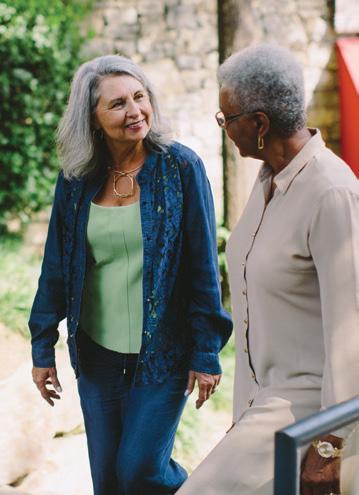














Commentary by Brad Owen
What legal steps can you take to protect a loved one’s well-being while respecting their wishes? In Indiana, guardianship and power of attorney are two essential tools that can help, but knowing the differences is key.
At Dillman & Owen Estate & Elder Law, we help families navigate these options with clarity and care. Whether you’re planning ahead or responding to an urgent need, our experienced attorneys will guide you toward the best solution.
What is guardianship?
Guardianship is a protective measure ordered by the court when someone can no longer make decisions for themselves because of incapacity, such as dementia, mental illness or a disability.
• Court-ordered protection: A guardian is appointed through a formal court process to make decisions on behalf of the individual (known as the “ward”).
• Comprehensive authority: The guardian may oversee personal, medical and financial decisions, ensuring the ward’s best interests are met.
• Court oversight: The court monitors the guardian’s actions to ensure compliance and protection for the ward.
• Guardianship duration: Guardianship typically remains in place until the court determines it is no longer necessary, such as if the ward regains capacity or passes away.
For example, if a loved one suffers from advanced Alzheimer’s disease and cannot manage their health care or finances, guardianship ensures someone is legally empowered to act in their best interest.
What is a power of attorney (POA)?
A power of attorney is a legal document that allows an individual (the “principal”) to name someone they trust (the “agent” or “attorney-in-fact”) to make decisions on their behalf. Unlike guardianship, this arrangement does not involve the courts unless disputes arise.
• Private agreement: A POA is created without court involvement, mak-
ing it faster and more flexible than guardianship.
• Principal’s control: The principal decides who their agent will be and what powers they will have, such as managing finances, making medical decisions, or both.
• Revocability: As long as the principal is competent, they can revoke or change the POA at any time.
• Durable vs. limited POA: A durable POA stays in effect even if the principal becomes incapacitated, while a limited POA only covers specific tasks or a set period of time.
For instance, if someone wants their adult child to handle their finances while they’re traveling abroad, they can create a limited POA for that purpose.
What are the differences between guardianship and power of attorney?
The main difference is in how they’re established and the level of control they provide. Guardianship requires a court process, where a judge appoints a guardian to make decisions for someone who is unable to do so themselves. This arrangement comes with ongoing court oversight to ensure the guardian acts in the ward’s best interests.
In contrast, power of attorney is a private agreement created by the individual (the principal) while they are still competent. The principal chooses an agent to act on their behalf and specifies the powers granted, which can range from managing finances to making medical decisions. Unlike guardianship, power of attorney can be revoked at any time by the principal, provided they are still competent. While guardianship often involves more comprehensive authority and court involvement, power of attorney offers a flexible, less intrusive option for planning ahead.
If you’re deciding between guardianship and power of attorney, don’t wait to get experienced guidance. Contact Dillman & Owen Estate & Elder Law for a consultation.
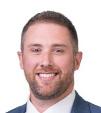
By Mark Ambrogi mark@youarecurrent.com
The owners of Ji-Eun Lee Music Academy know music can provide many benefits for the mind and body.
So, the Ji-Eun Lee Music Academy in Fishers has partnered with the Fishers Art Center to offer free Music and Movement for Silver Age classes for people 55 and older.

Doug Whisman, co-owner of the Music Academy with his wife Ji-Eun Lee, said the idea was pitched to the Fishers Arts and Cultural Commission to hold the classes at the Fishers Art Center, which is on the first floor of Fishers City Hall
“It’s certainly larger than my theater,’ Whisman said. “We could have done this on our own in our theater, but we thought it made more sense to have it at the Fishers Art Center because it’s for the community.”
Classes are from 1 to 2 p.m. on Tuesdays for six weeks, starting May 6. Although it’s a free class, registration is required at fishersmusic.com. The classes will be directed by Abby Rose Veselsky, a theater director and voice instructor at the Music Academy.
“You don’t have to stand,” Whisman said. “It’s OK to be in a wheelchair. It’s partly for social activity, partly for physical movement and partly to sing and have fun.”
Lee said Veselsky’s classes will range from musical theater to pop music
“It can be ‘60s and ‘70s pop music, something really familiar,” Lee said. “It’s a very relaxed environment where they can sing together. Then we put on the dance moves a little bit. Abby is hoping it will be more structured and maybe at the end there will be a short performance all together.”
Classes are designed to help participants improve flexibility, balance and overall health.
Whisman said participants don’t have to attend every class.

By Mark Ambrogi mark@youarecurrent.com
It was not Freddie Kelvin’s idea to write “Embracing the World’s Faiths.”
It came as a suggestion from Charlie Wiles, then the executive director of the Center for Interfaith Cooperation.
“In September 2023, he unexpectedly invited me to write a series of monthly essays about the world’s faiths,” Kelvin said. “As a nonpracticing secular Jew, I did not consider myself sufficiently well-informed about any faith or religion. However, he persisted, and having seen my memoir ‘Urban Nomad,’ opined that I can write. It was flattering, and so I accepted. I had no idea what was in store for me.”
the Sanskrit word ‘Sindhu,’ which referred to the Indus River.”
Kelvin said ancient Persians had difficulty pronouncing the letter “s” and therefore called the people living beyond that river “Hindus.” So, he said the word was initially only a geographic designation and not a term denoting a religion.

The 81-year-old Carmel resident said he was surprised to learn how many of the world’s faiths evolved from a single founder.
“While most of us know that the three major monotheistic religions, Judaism, Christianity and Islam, as well as Buddhism, originated in this way, I found out that this was also true of other, less well-known faiths such as Sikhism, Jainism, and the Baha’i Faith,” Kelvin said. “Hinduism is a notable exception, and indeed, its name is a misnomer. The term ‘Hindu’ originated from
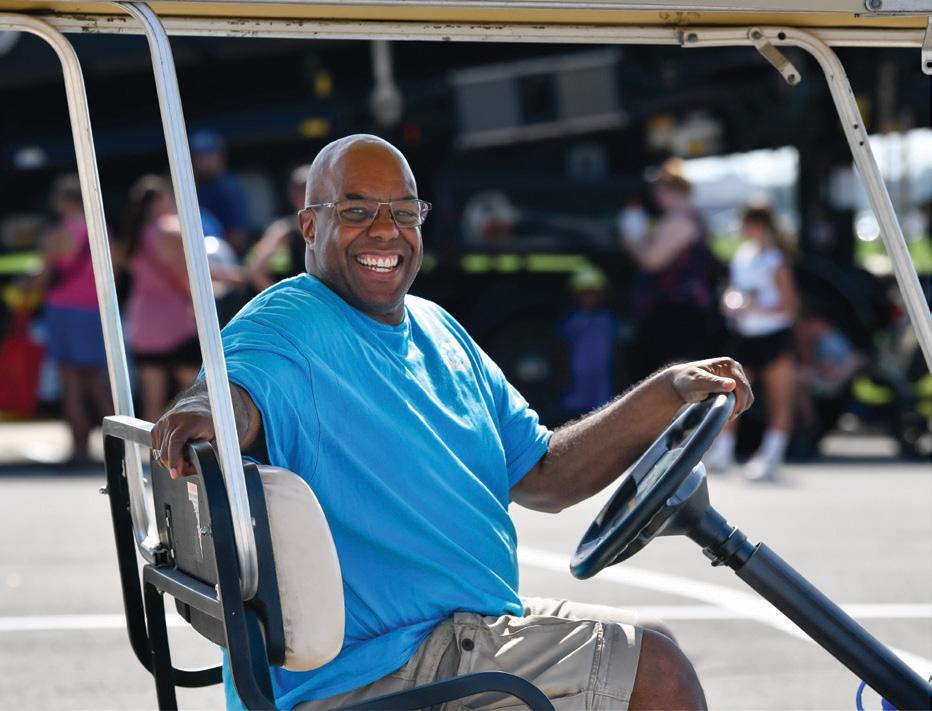
“It was also fascinating to find out that several religions originating in India, specifically Hinduism, Buddhism, Jainism and Sikhism, all believe in reincarnation,” he said. “Parenthetically, the thought that your soul is reborn after death has far more appeal to me than the dubious alternatives of heaven or hell.”
Kelvin said each time he studied another religion, he was filled with unexpected pleasures.
“I found out that both Sikhism and the Baha’i Faith consider that all people, whatever their religion, race, or sex, are equal in the eyes of God,” Kelvin said. “These strong examples of mutual respect are very much in keeping with the core values of the interfaith tradition. Now, more than ever, we need to respect and understand each other’s belief systems if we are to live in relative harmony and survive intact. Fortunately, Carmel is a progressive and increasingly diverse community that provides hope for such an outcome.”
Kelvin worked on the book from October 2023

through October 2024.
“I was thoughtfully connected to carefully selected members of the CIC community, many of whom co-authored the essays pertinent to their faith,” he said. “Each member was provided with my initial draft, which was then amended and extended, usually following one or more phone conversations. The final draft for each faith was approved by each member of that faith.”
Although he is well aware of the rise of antisemitism and other bigotry, Kelvin said they weren’t factors in writing the book.
“As the son of parents who narrowly escaped the fateful grip of the Nazis in Austria, I have always been fully aware of the widespread nature of antisemitism,” he said. “My agreement to write these essays took place before the onset of the more than 300 percent increase in antisemitic incidents that have been recorded in the USA — according to the Anti-Defamation League — since the Hamas massacre of Israelis on Oct. 7, 2023, and the subsequent war that Israel is still waging against Hamas and Iran’s other proxies. Islamophobia is another dangerous prejudice that has currently given rise to grossly unnecessary acts of discrimination which should, in any civilized society, be roundly condemned.”
The book was published by BookBaby Bookshop and will be available on Amazon.
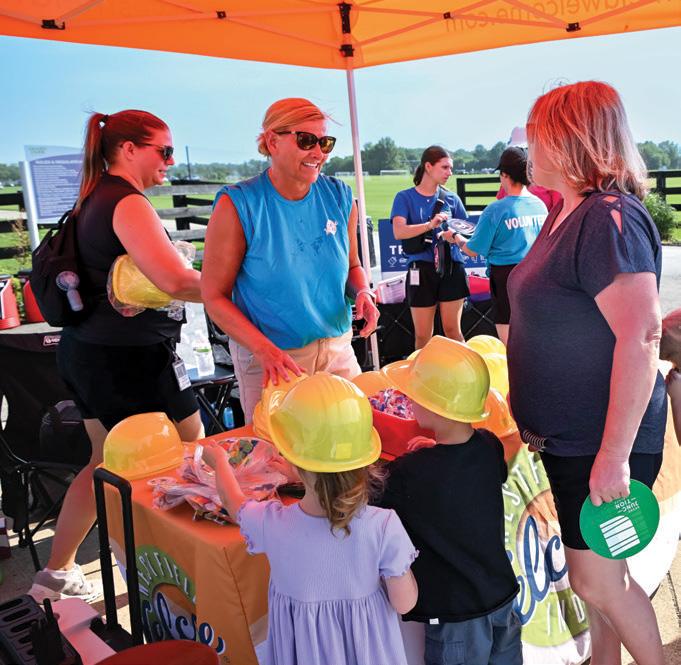




By Mark Ambrogi mark@youarecurrent.com
Susan Hill has seen many changes in her nearly 33 years at Griffon Decorative Fabrics in Carmel.
“We’ve had our up years and down years,” Hill said. “We survived the (Great) Recession (in 2008-09). Other than the initial month of COVID (March 2020), when everyone freaked out and we had to close, we did OK because everyone was staying home and re-doing a lot of their stuff. We do a lot of reupholstering work. We have workrooms that do draperies and pillows.”
A 60-year-old Noblesville resident, Hill has been with the store since it opened in the fall of 1992.
“We were opened by two men out of North Carolina, and then four years after that, myself and Judy Stewart bought it from them,” Hill said. “They originally opened four stores around the country, but this is the only one left.”
Stewart, a Fishers resident, retired five years ago and Hill became the sole owner. Although the store is popular

with older shoppers, Hill said it has customers of all ages.
Griffon Fabrics started at 116th St. and Range Line Rd. and remained there for 20 years and then moved in 2012 to its present location at 598 W. Carmel Dr.
“We do a lot of reupholstery work, custom draperies, custom cushions, custom bedding and pillows,” Hill said.
“We have started to carry a few accessories like small side tables, artwork, lamps and tabletop items. Sometimes, I’ll pick up an antique chair and reupholster it and sell it.”
DBy Mark Ambrogi mark@youarecurrent.com
ebbie Cooney takes full advantage of the activities at Sycamore Reserve Senior Living in Indianapolis.
There are exercise classes six days a week and she tries to participate in as many as she can. Classes include yoga and gentle aerobics and rehab sessions three times a week.
He worked at the Chrysler Foundry and Cooney served was his caregiver when he went on disability.
Although Cooney can still drive, she takes the Sycamore’s bus on weekly supermarket trips.
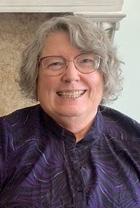
Cooney also enjoys bingo, trivia games and the Friday afternoon happy hour with live entertainment.
“I’ve made some good friends here and everybody has been welcoming — the staff and the residents,” she said. “It’s been very enjoyable. They offer a lot. I don’t go to all the activities. I have to pick and choose.”
Cooney, 73, moved to the Indianapolis senior living center in November 2024 from an apartment on the east side of Indianapolis. Her husband, Clifford, died at age 70 in June 2023.
She was a preschool teacher for 38 years at Old Bethel Weekday School in Indianapolis, retiring when the COVID-19 pandemic began in 2020. An Indiana University and Hobart High School graduate, she taught one year in Portage.
“I loved the children,” she said.
“I appreciated their exuberance for learning. I taught every age but mostly ages 3 and 4. I do miss it.”
Cooney has two adult children, Heather Moody and Bob Cooney. Heather had two children and Bob has three. Her youngest grandchild is 6, and the next youngest is 15.
About a year after retiring, Cooney volunteered at Old Bethel for a short time. She had to give it up because of back issues.
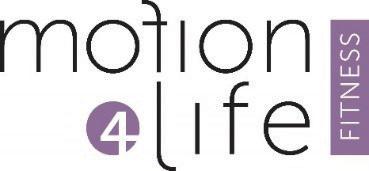



Commentary by Dr. David Sullivan and Dr. Kenneth Stumpf
May is Skin Cancer Awareness Month, reminding us to prioritize skin health, particularly in often-neglected areas like the feet and lower legs. Skin cancer is among the most common types of cancer, making early detection crucial. Regular examinations by health care professionals, especially podiatrists, are essential for skin health in these regions.
The feet and lower legs are frequently exposed to environmental factors such as sun and pollutants. Many neglect to apply sunscreen in these areas, increasing the risk of skin cancer, especially for those with a history of sunburn. There are several types of skin cancer to be aware of:
• Melanoma: The most serious type, which can appear as a new dark spot or a change in an existing mole.
• Basal cell carcinoma: Typically presents as a shiny bump and is generally found on sun-exposed skin, causing local damage if untreated.
• Squamous cell carcinoma: May appear as a firm red nodule or a flat sore and requires attention if persistent.
Podiatrists play a vital role in identifying skin conditions specific to the lower extremities.
To protect against skin cancer, individuals should consider several preventive measures:
• Conduct regular self-examinations of the feet and lower legs for any changes.
• Apply sunscreen to these areas, even in cloudy weather.
• Wear protective footwear to limit UV exposure.
• Schedule routine visits to a dermatologist as well as a podiatrist for thorough lower extremity skin checks.

Dr. David Sullivan and Dr. Kenneth Stumpf are both board-certified foot surgeons at Westfield Foot and Ankle, LLC. Contact them at appt@westfieldfoot.com or 317-896-6655.
Commentary by David Stordy
As we age, it’s natural to think about maintaining our independence while ensuring we have the support we may need. Home care is an essential part of this planning, whether you’re managing a chronic condition or preparing for the future.
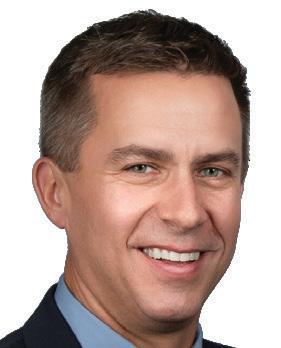
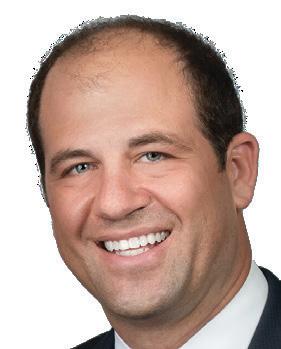
Home care can range from basic help, like meal prep and bathing, to more specialized services such as nursing care, physical therapy or memory support for conditions like Alzheimer’s. Identifying potential needs early allows you to choose the right care provider, whether it’s a personal caregiver or a specialized agency.
When researching home care options, ask about the services offered, caregiver qualifications and availability. It’s important to understand how agencies handle scheduling, emergencies and backup caregivers. Look for providers who can adjust care as your needs change over time.
Another key part of planning is having conversations with family about your
preferences. Discussing home care and end-of-life decisions now ensures your loved ones can support you according to your wishes, avoiding potential conflicts later.
Home care checklist
• Agree on roles: Assign responsibilities for finances, medical decisions and home maintenance.
• Monitor your health: Track physical or cognitive changes and adjust care plans as needed.
• Discuss preferences: Have ongoing conversations with family about care and end-of-life wishes.
• Gather documents: Prepare key records, insurance policies and powers of attorney.
Planning ahead brings peace of mind, knowing your future care will align with your needs and preferences.

David Stordy is the directorowner of BrightStar Care. To learn more about home care or schedule an assessment, call BrightStar Care at 317-706-0799 or visit brightstarcare.com.

Commentary by Autumn Kolpin
As a personal trainer, one of my favorite parts of the year is when the weather starts to shift. These early spring days when the sun sticks around a little longer, there’s more energy in the air, and people start coming out of winter hibernation. You see neighbors walking, kids playing, gardens getting some love again. It’s like everything and everyone starts to wake up.
Every year around this time, I hear the same thing from clients and friends: “I just want to feel good doing the things I love this summer.”
Whether it’s running around with the grandkids, playing pickleball, going on a vacation hike or just working in the yard, feeling strong and capable makes all the difference.
What a lot of people don’t realize is that you don’t need to change everything all at once or hit the gym six days a week to feel better. It can be as simple as building a little more strength in your legs so walks feel easier or working on your balance so that you feel steadier when you’re on uneven ground. I’ve seen clients go from being nervous about getting back into movement to confidently doing the things they love again. That’s the kind of progress that excites me.
And it’s not just physical.
Getting your body moving again has a huge impact on your mental health, too. I’ve had clients come into a ses-
sion feeling tired, stressed or a little off and leave with more energy, better focus and a smile. There’s something about moving your body, especially in a supportive space, that lifts your entire mood.
Spring and summer are filled with chances to move more and have fun doing it. But to really enjoy it, to feel free and not held back by aches, stiffness or low energy, you need to give your body a little love now and continue to do so that you feel good all year round. A bit of strength training, some core work, improving mobility, it all builds a foundation that makes summer activities easier and way more enjoyable. When summer ends, you’ll be ready to tackle the cold weather ahead.
So, my advice? Start small. Start now. Take a walk, stretch a little more, try a new class or ask a trainer for guidance if you’re unsure where to begin. You don’t need to be an athlete. You just need to be ready to say “yes” to all the opportunities that come with warm, sunny days.
If I can help someone feel more confident in their body and enjoy summer to the fullest, then I’m doing what I love, too.
Here’s to moving more, feeling better and having a whole lot of fun this season!

Meridian Audiology LLC, a private Audiology practice, was founded by Dr. Alison Wyss, Au.D and Kira VonBlon, M.S. in 2021 after working together in an ENT setting for more than 13 years.
The seasoned Audiologists strive to consistently provide premier care to patients with hearing loss, tinnitus and auditory processing disorders as well as those who want to protect their hearing from damage.
In stark contrast to the medical audiology world where patients are in and out in quick succession, private practice allows Ali and Kira to spend the time their patients want and need from them for their individual hearing healthcare situation.


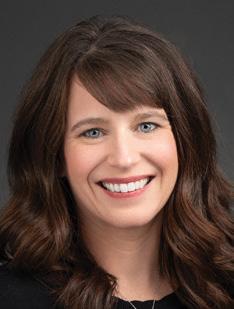
“We love getting to know our patients, and we feel we treat them like we we would treat our own family,” VonBlon said.
“We won’t rush you out the door to get our next patient.
We both feel one of our greatest compliments over the last 4 years is how many of our previous patients have found us at Meridian Audiology and have followed us here for their continued hearing treatment.”
The Meridian Audiology Audiologists pride themselves on keeping up with, and
offering the top-of-the-line newest technology in hearing aids, tinnitus and auditory processing disorders. While we focus on Phonak and ReSound, we can work with most all major hearing aid companies to be able to help a wide majority of patients with existing hearing aids. We know there are many places you can go to treat your hearing loss, but if hearing your absolute best, feeling comfortable and safe in your providers office and trusting your Audiologist are priorities for you, Meridian Audiology is where you belong.
M Meridian Audiology accepts most major insurances, offers convenient scheduling via phone, email or online and are independent of other medical practices or hospitals Hours are 9am-4pm Monday-Friday by appointment only We are also available to speak to your local community clubs about hearing and hearing loss.
By Dr. Camden Burns, MD, IU Health spine and orthopedic trauma surgeon
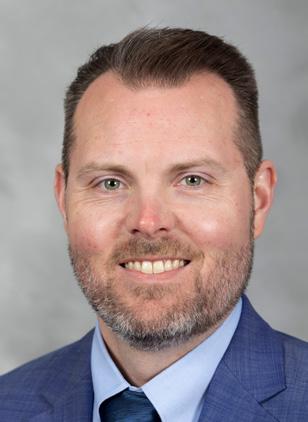
The spine has five sections of vertebrae, including the neck (cervical spine), the midback (thoracic spine), the lower back (lumbar spine), the base of the spine (sacrum) and the tailbone (coccyx). Pain generated from any of these areas can have different causes, ranging from a muscle or ligament strain to spinal tumors. As a lifelong athlete, I learned firsthand the importance of the musculoskeletal system, leading to my career in orthopedics and sports medicine. It’s my goal to help patients afflicted by these musculoskeletal types of injuries and conditions and get them back to a healthy, functional lifestyle. Proactively addressing your spine health can help prevent more serious pain and injuries in the future. There is a wide array of treatment options, from physical therapy to pain management to spine surgery.
BACK PAIN AND INJURY SIGNS THAT SHOULDN’T BE IGNORED
All back injuries should be taken seriously. Minor injuries, such as muscle strains, can be treated with over-the-counter medication, rest and relaxation. Sometimes, these minor injuries may require a short course of physical therapy as well. More significant and persistent injuries, especially herniated disc fractures, may need to be seen and evaluated by a spine specialist. Certainly, anytime you experience neurological symptoms, such as pain, numbness, tingling and weakness in the extremities, you may need to be evaluated more urgently.
Conservative options for management of spinerelated issues start with rest and relaxation, physical therapy and a combination of either over-the-counter or prescription medications. If symptoms persist, there are some interventional pain management procedures, such as injections, that may also help. In more extreme cases, surgical intervention may be warranted when there are neurological symptoms that not only involve pain in the neck and back, but also symptoms in the extremities.

Patients with new onset and minor symptoms should first be evaluated by their primary care physician. They may suggest a short course of rest, followed by physical therapy and anti-inflammatory medication. More severe symptoms are sometimes seen in the emergency room. Again, conservative treatment is usually attempted first if there are no emergent symptoms. For more chronic symptoms that fail conservative measures, patients may be evaluated by either the physical medicine and rehab or the anesthesia pain management service for further nonsurgical intervention. If those efforts fail or if the patient has significant neurological symptoms in their extremities, evaluation by a spine surgeon may be necessary.
Over the past decade, we have made efforts to expand spine care at IU Health outside of the downtown region. Certainly, we still
maintain a large presence in that area. However, we understand that patients may not have the ability or desire to travel downtown for evaluation and treatment. In those instances, we have established practices at IU Health North in Carmel and IU Health West in Avon, with plans for further expansion to other suburban facilities in the future.
I think the best way to describe the Spine program at IU Health as “complete.” It is the only academic Spine program in the state of Indiana. It is also the most comprehensive spine care program comprised of non-operative sports medicine, physical medicine and rehab, anesthesia pain management, interventional radiology, as well as neurosurgery and orthopedic surgery. We have the ability to provide treatment in all aspects to spine care throughout the Indianapolis Metropolitan and suburban region.
To learn more about IU Health’s Spine program, visit iuhealth.org/find-medical-services/ back-spine-care.






Suffer from back or neck pain? Find highly skilled treatment options from non-invasive to surgical close to home. Visit iuhealth.org/spine and schedule your appointment today.
Golf helps keep Carmel resident in the swing of things

By Mark Ambrogi mark@youarecurrent.com
Webber LaGrange doesn’t have a lengthy explanation for his longevity.
“I’ve exercised most of my life,” said LaGrange, who turns 98 May 2.
Good genes help, too.
“My dad was a month short of 99 when he passed away,” he said. “I’m trying to pass him.”
LaGrange’s advice to recent retirees is, “Stay active. The guy who dies the quickest is the one who sits on the front porch.”
LaGrange, who lives in The Stratford in Carmel, stays active through exercise classes and playing golf several times a week when the weather turns warm.
LaGrange has only been to the hospital once in his life, which was for cataract surgery when he was 33. He has never had a broken bone or any other operation.
“I’m fortunate. I can see that when I look around here (at The Stratford),” he said. “I can still walk without a walker.”
Golf gives him the opportunity for some good walks.
“We play about 25 golf courses around here every summer,” said LaGrange, who has had an 88 stroke average the last two years. “I do my best to ride with someone so I can walk as much as I want. It keeps you young. I’m playing more golf now than when I was in my 60s.”
LaGrange plays golf with a travel group on Mondays, Wednesdays and Fridays and plays in a men’s club at Wood Wind Golf Club in Westfield. He has a plaque from Wood Wind for twice shooting 81 – 16 strokes below his age — in 2024.
“When you play in a group like that, you don’t have to worry about tee times,” he said. “Someone has (set) it up and you just show up.”
LaGrange, who enjoys several aspects of golf, said he frequently plays at Wood Wind.
“I enjoy the fellowship and the 19th hole, especially,” he said. “It keeps me moving. I exercise all winter at The Stratford. It’s nice to have a different means of exercise.”
LaGrange was in his late 30s when he took up golf.
“It took too much time away from my family on the weekends, so I gave it up for a while,” he said. “When the kids got out of high school, I started playing golf again.”
LaGrange moved to The Stratford around 11 years ago. His wife, Kathryn, died nearly14 years ago. He did his homework before moving to the Carmel senior living center.
“I looked at 10 or 12 places, and this was the best bang for the buck and still is,” he said.
LaGrange recently had his driver’s license renewed.
“That allows me to play golf,” he said.
Neal Miller, The Statford lifestyle advisor for independent living, said LaGrange is a very accomplished
Continued on Page 11
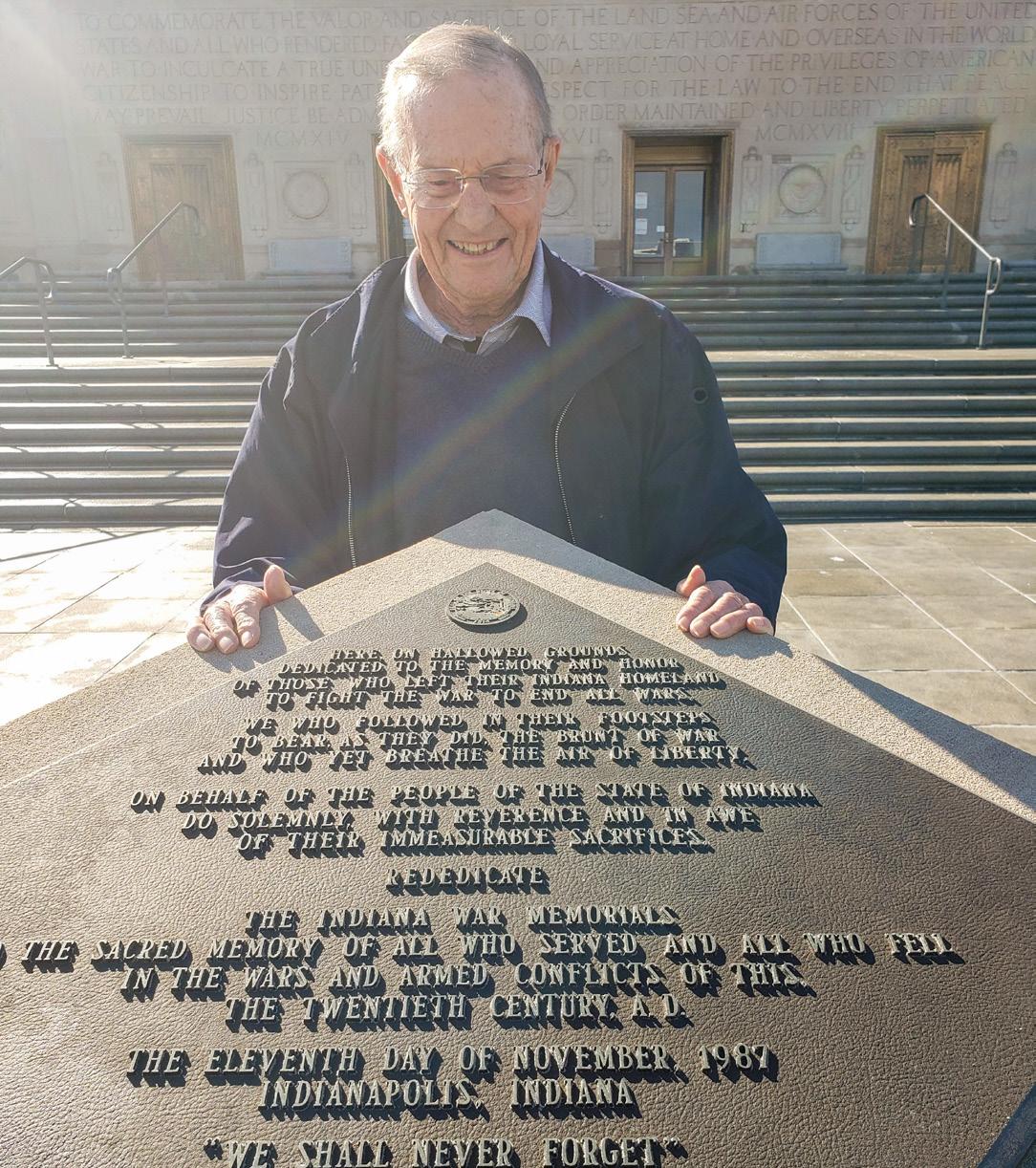
Continued from Page 10
individual.
“But with regard to his longevity he’s a perfect example that if you live right you can continue to do the things you want and enjoy for a very long time,” Miller said. “Most people think aging is synonymous with decline and that’s just not the case. My hope is that people will see Webber and say, ‘Hey, I can do that too.’’’
LaGrange keeps busy socializing, too. He said residents have a lot of outings and events at the Allied Solutions Center for the Performing Arts in Carmel.
‘They have nights where they go out for dinner at different restaurants,” he said. “There is nice camaraderie. They’ve got so many activities here (that) you can’t do them all. You can pick and choose what you like.”
A 1945 Franklin Community High School graduate, LaGrange persuaded his parents to let him enlist in the U.S. Navy during World War II.
“I was at sea when my class graduated,” he said. “I was on a battleship in the South Pacific. They took me three or four months before graduation, so they didn’t waste any time getting rid of me. They were kind enough to present my diploma while I was gone.”
Webber LaGrange in front of the Indiana War Memorial plaque. (Photo courtesy of The Stratford)
LaGrange, who served 18 months in the Navy, said the ship was on its way to Japan when the Japanese surrendered.
“So, we did a U-turn and went to Hawaii,” he said. “I tried college, but I ended up doing the school of hard knocks. I farmed some and then got into banking. My uncle had a big farm in Franklin, but I was trying to work smarter, not harder.”
LaGrange was a banker for 25 years, eventually becoming a senior vice president of the Fidelity Bank of Indiana in Carmel. Then he became national treasurer for the American Legion for 20 years. He also was named to the Indiana War Memorial Commission and named executive director of the Indiana War Memorial in downtown Indianapolis. He has been honored with three Sagamore of the Wabash awards by three different Indiana governors — Robert Orr, Evan Bayh and Frank O’Bannon.
LaGrange’s daughter, Susan Loman, lives in Carmel, and his son Gene LaGrange lives in Franklin. His middle child, Alan, died of pancreatic cancer at age 56 in 2014.
LaGrange has five grandchildren, five great-grandchildren and one greatgreat granddaughter.
ON THE COVER: Webber LaGrange has three Sagamore of the Wabash awards. (Photo by Mark Ambrogi)
• Restaurant-Style Gourmet Dining
• Activities & Social Calendar
• 24-Hour On-site Staff
• Housekeeping
• Transportation
• Emergency Trip / Fall Pendant
• Outdoor Heated Saltwater Pool
• Utilities (Power, Water, Trash)
• High-Speed Internet (Wi-Fi)
• HD Cable TV
• Theater Room
• Fitness Center
• Dog Park
• Putting Green
• And So Much More...







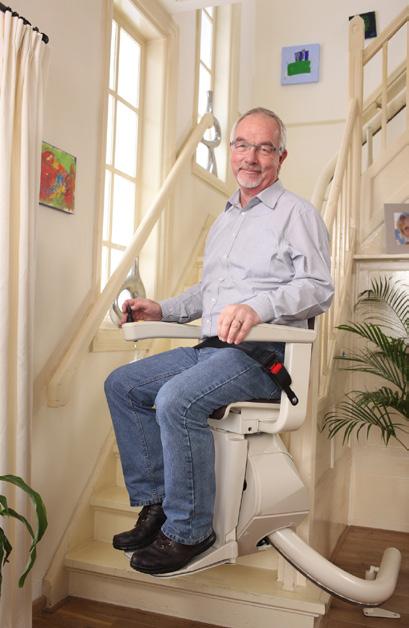

TBy Les Morris editorial@youarecurrent.com
he first Marble Brain Body Fitness “brain gym” in the U.S. was opened in Fishers by wellness entrepreneur Sharea Clark, and now she is on track with a novel concept with a new business for a growing community.
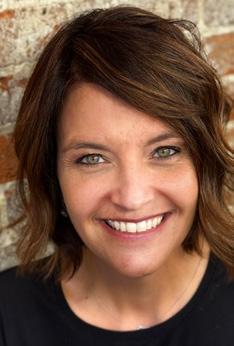



• Varicose Veins/Chronic Venous Insufficiency
Spider


Clark, 50, also owns Fitness 4 Function, a fitness company that helps seniors stay in their homes by providing in-home fitness care.
While attending a Chicago conference in February 2024 sponsored by the International Sports Sciences Association, Clark heard a presentation by Cody Sipe and Dan Ritchie, who both have doctorates and ties to Purdue University. Their talk included an idea, not fully formed, about a facility that would aid older adults with their
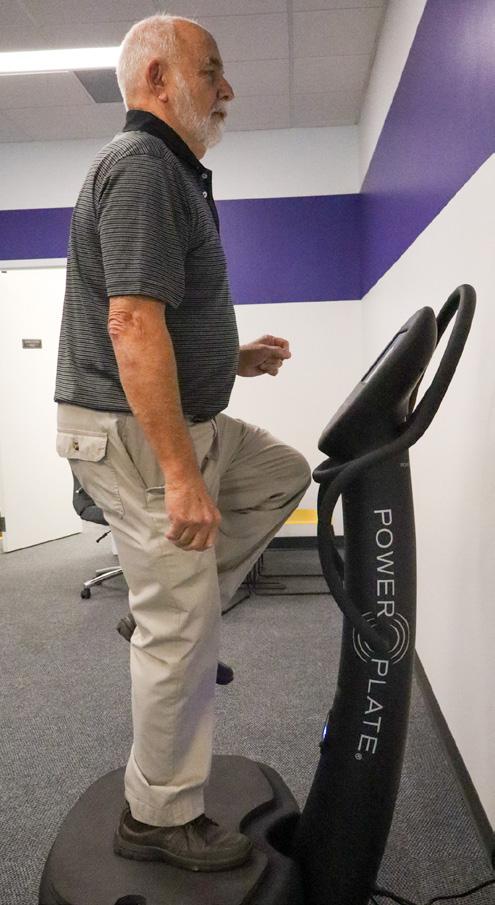
Continued on Page 15 cognitive functions. That idea resonated with Clark and that led to conversations with the pair
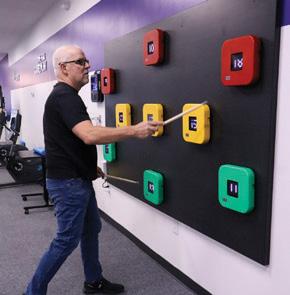

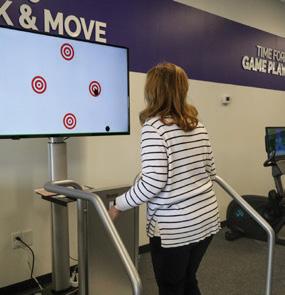
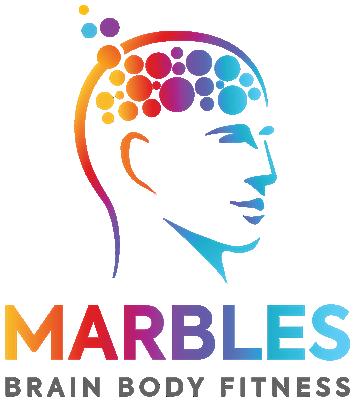
• Personalized brain-body workouts for adults aged 55+, addressing physical and cognitive abilities.
Dual-Task Approach
• Simultaneous cognitive-motor training for maximum effectiveness.
High-Tech, High-Touch
• Engaging exergaming technology with personalized support for members.
By Mark Ambrogi mark@youarecurrent.com
he Wright Brothers’ final performance was in February 2023, but Tim Wright isn’t slowing down.
The 72-year-old Wright, who performed for many years with older brother Tom, plays with a variety of groups and also is a solo performer.
Wright plays pedal steel guitar, guitar and sings a few songs for Barometer Soup, a Jimmy Buffett tribute band, which will play from 5 to 7 p.m. May 13 at Hoosier Village in Zionsville. Another free public concert at Hoosier Village is Aug. 5 with Josh Kaufman, the Season 6 winner of “The Voice.”
Wright knew a few of the late Buffett’s famous songs, but he learned more when he played a regular solo show several years ago for since-closed Bahama Breeze on the north side of Indianapolis.
“They gave out song lists they want you to play, and most of it was reggae and Jimmy Buffett songs,” he said. “I learned about 300 Buffett songs the


At age 72, Tim Wright keeps an active performing schedule. (File photo)


three years I played there when they were open.”
Barometer Soup will play June 21 at the Sunset Music Fest at Clay Terrace in Carmel.
Wright doesn’t mind if he doesn’t sing.
“I’m farming myself out as a pedal steel player,” he said. “I’d rather play pedal steel with other people than anything. I’ve sung my whole life since I was 19. I don’t mind if I don’t sing a note. It’s easier and fun to play.”
Tim Wright and the Steel Petals, which includes two female vocalists, will play at 7:30 p.m. May 2 at Feinstein’s cabaret at Hotel Carmichael in Carmel.






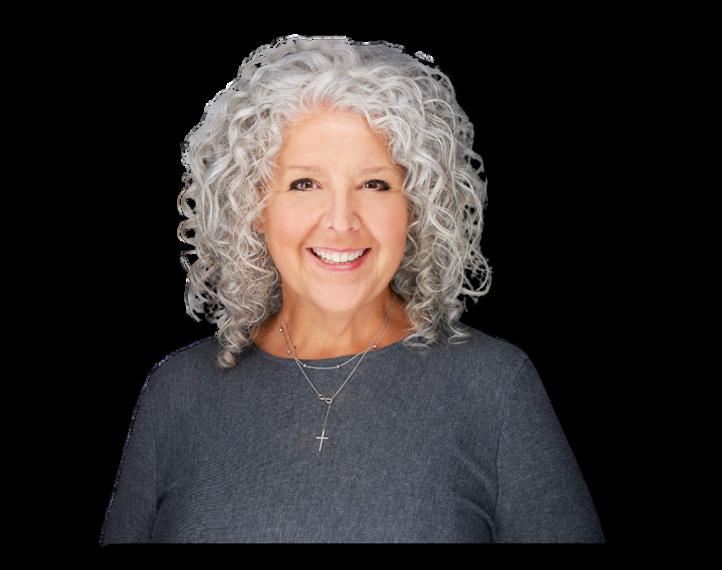






Continued from Page 12
about opening what turned out to be the first franchise and location for the initiative.
Clark said she was uncertain about the gym’s prospects at first.
“I said yes, then no, then I don’t know, and I finally said yes, and here we are,” she said.
The gym is at11386 Olio Rd. in Fishers in a 1,600-squarefoot facility that opened April 7. The philosophical underpinning of Marble Fitness is dual tasking – attempting to ward off cognitive decline in adults 50 and older by activities that engage the body and brain at the same time.
“This is for cognition and brain health,” Clark said. “We’re focused on doing exercise on your body and brain
to decrease the risk of cognitive decline.”
All the activities at the gym are evidence based, Clark said. After a brief initial assessment to measure a baseline of cognitive ability, members schedule 30-minute group sessions at the facility. The activities are primarily designed to improve brain performance, cognitive performance, processing speed and memory but there also are multiple body benefits, including gains in strength, endurance, balance and mobility.
Membership levels are based on the number of visits per week, ranging from two to five times a week. Rates are $149 to $299 monthly, depending on the frequency of visits.
Marble Fitness’ grand opening is May 8, with a ribbon cutting at 4 p.m. and an open house to follow.
Continued from Page 5
The shop also sells Hunter Douglas blinds.
“Upholstering is the top seller now,” Hill said. “There was a time (when) we did tons of bedding and a time (when) we did a ton of draperies. Styles change, too. It’s a little more simplistic now, not as fancy.”
The store has another full-time employee and two part-time designers on staff. Griffon Fabrics is open 10 a.m. to 5 p.m. Monday through Friday and 10 a.m. to 4 p.m. Saturday.
For more, visit griffonfabrics.com.
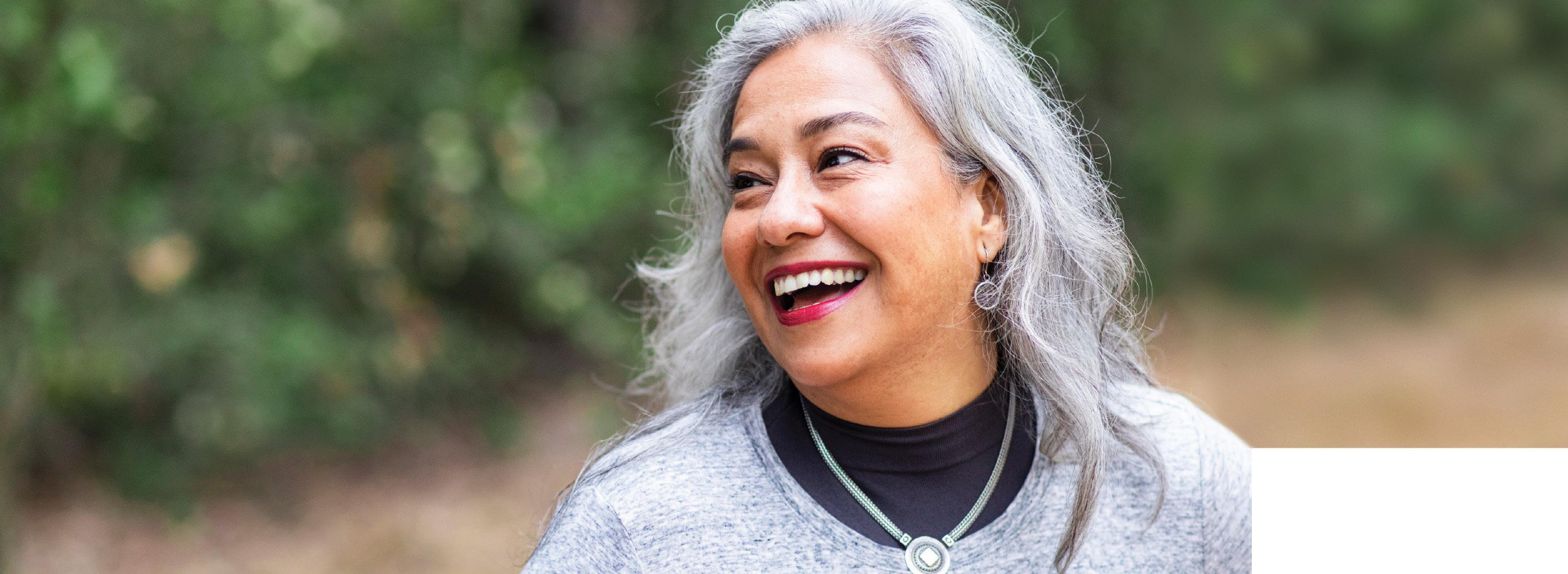

I’m Kimberly Hughes, a licensed sales agent in Hamilton County, serving central Indiana. When it comes to Medicare, it’s important to consider all of your options. What works well for your neighbor may not be the best fit for you. I know the ins and outs of Medicare, and I’m ready to answer your questions and help you find a plan that fits your needs. Make the most of my knowledge and experience to:
• Take the confusion out of Medicare
• Get help comparing plans
• Receive one-on-one service
• Make enrolling in a plan easier
I look forward to helping you explore your Medicare options so you can enroll in a plan with confidence.

Kimberly Hughes Licensed Sales Agent 3177925227, TTY 711 berlyhughes@gmail.com www.myuhcagent.com/kimberly.hughes

A world to explore, a vibrant community to come home to. A lifestyle that embraces true independence, friendships, culinary celebrations, and the safety of community.
It’s time to enjoy retirement the way it’s meant to be.




